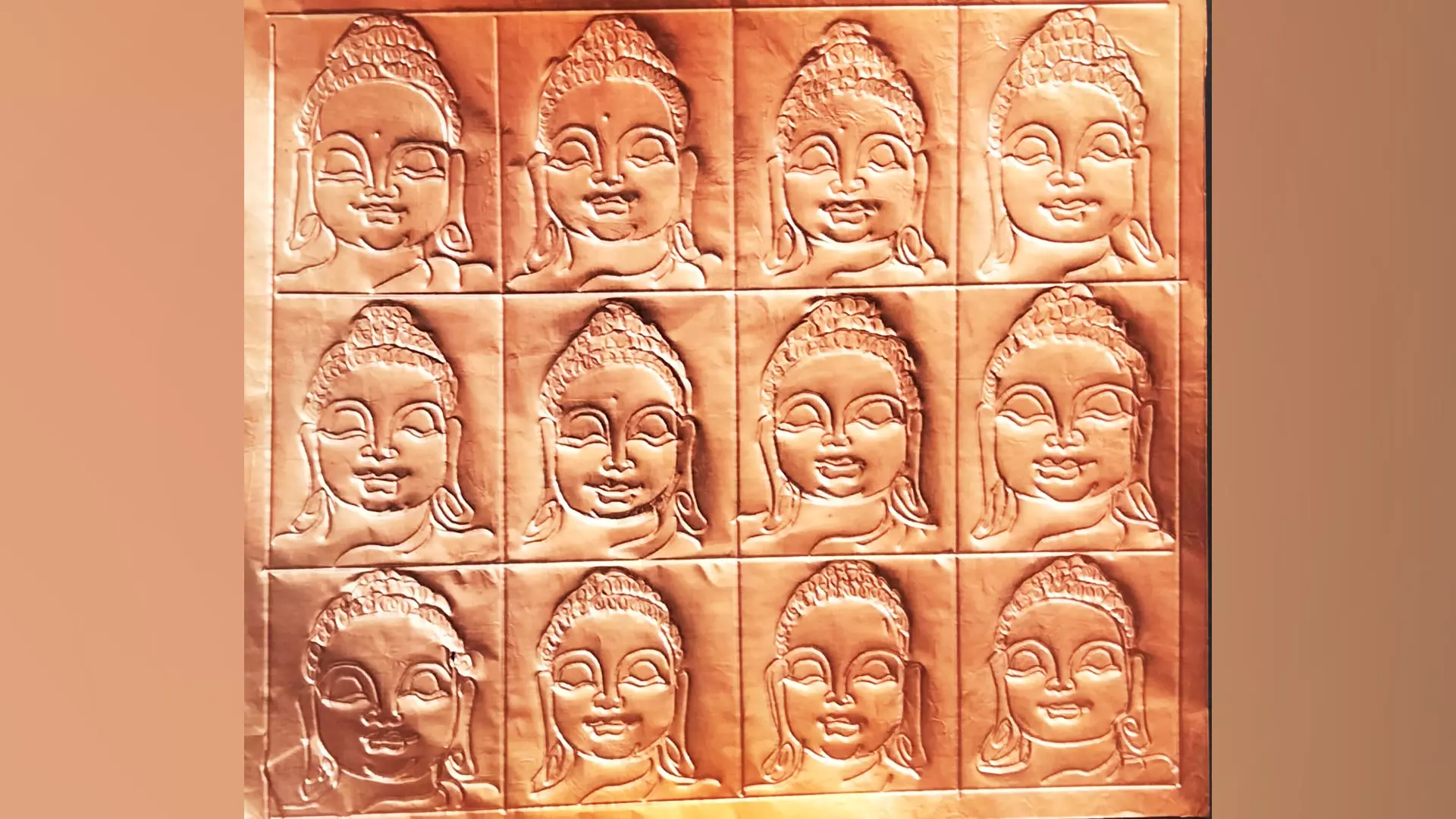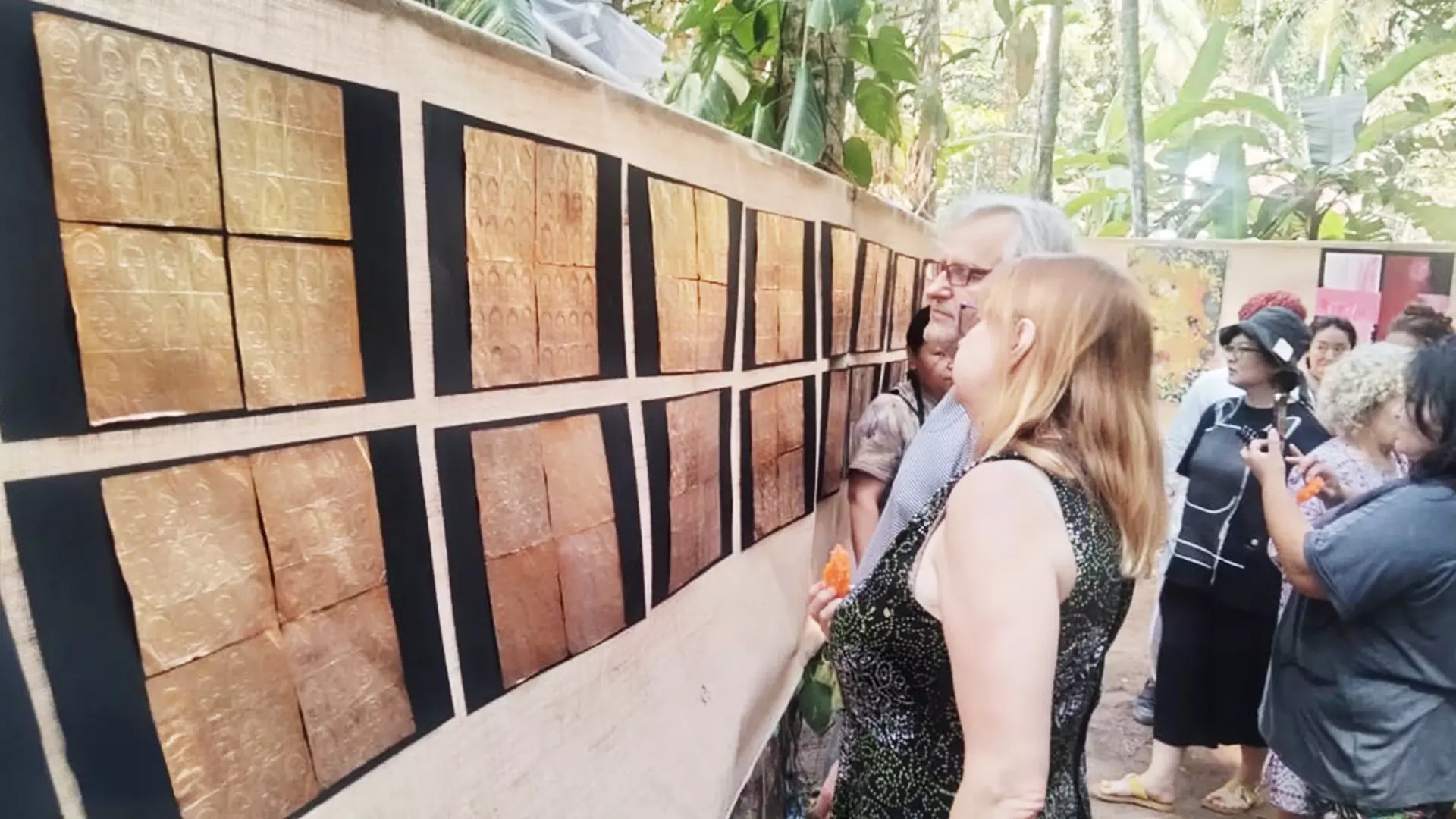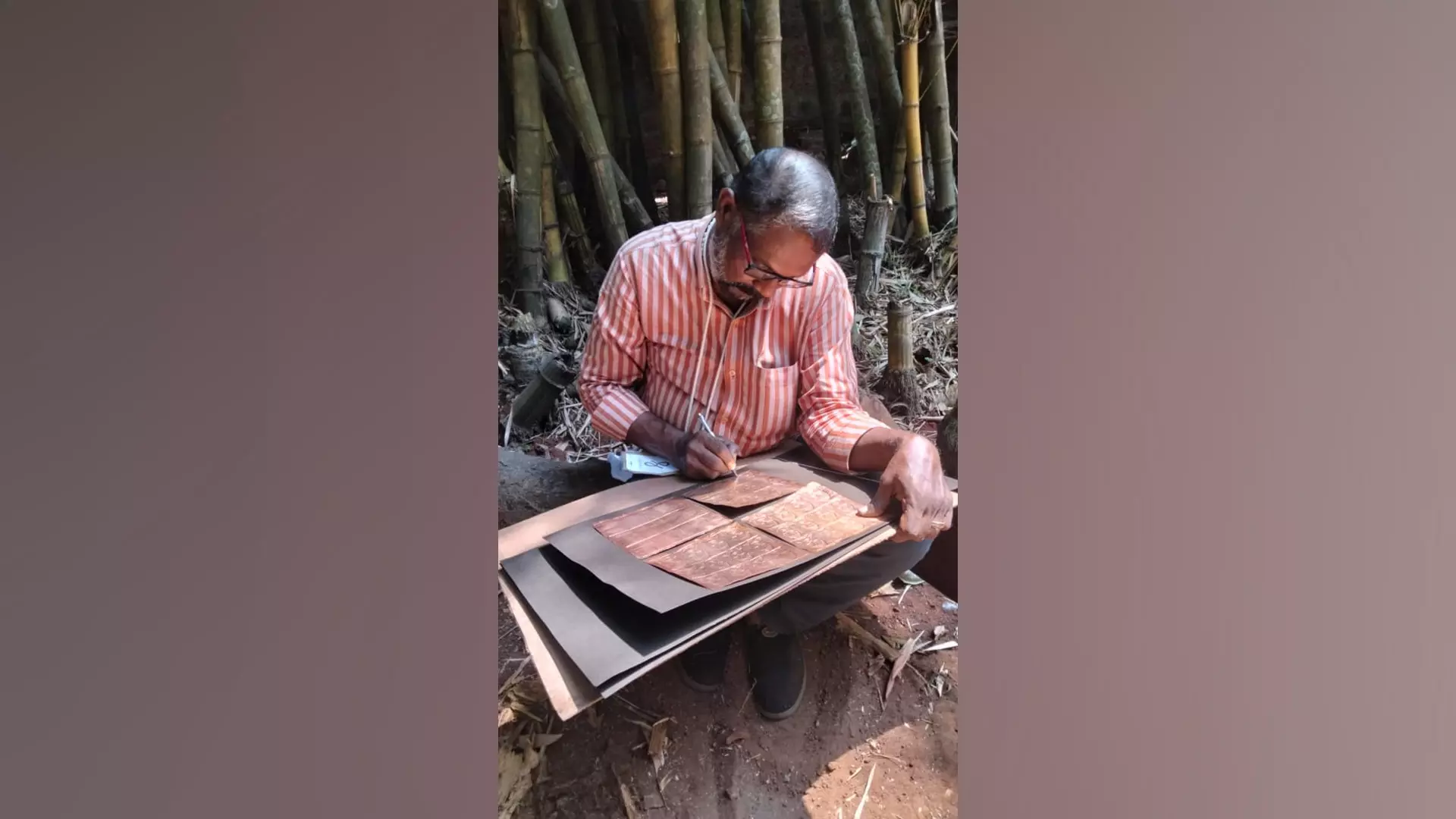
- Home
- India
- World
- Premium
- THE FEDERAL SPECIAL
- Analysis
- States
- Perspective
- Videos
- Sports
- Education
- Entertainment
- Elections
- Features
- Health
- Business
- Series
- In memoriam: Sheikh Mujibur Rahman
- Bishnoi's Men
- NEET TANGLE
- Economy Series
- Earth Day
- Kashmir’s Frozen Turbulence
- India@75
- The legend of Ramjanmabhoomi
- Liberalisation@30
- How to tame a dragon
- Celebrating biodiversity
- Farm Matters
- 50 days of solitude
- Bringing Migrants Home
- Budget 2020
- Jharkhand Votes
- The Federal Investigates
- The Federal Impact
- Vanishing Sand
- Gandhi @ 150
- Andhra Today
- Field report
- Operation Gulmarg
- Pandemic @1 Mn in India
- The Federal Year-End
- The Zero Year
- Science
- Brand studio
- Newsletter
- Elections 2024
- Events
1001 faces of Buddha in 1001 minutes

The Buddha has been a subject of creativity for writers and artists since his preachings evoked a sense of consciousness 2500 years ago. An attempt to redefine the Buddha using various mediums resulted in major works in art, cinema and literature. At the same time, overuse of the ‘images’ of the Buddha often led to cliches. When artist CK Kumaran wanted to draw the images of the Buddha,...
The Buddha has been a subject of creativity for writers and artists since his preachings evoked a sense of consciousness 2500 years ago. An attempt to redefine the Buddha using various mediums resulted in major works in art, cinema and literature. At the same time, overuse of the ‘images’ of the Buddha often led to cliches. When artist CK Kumaran wanted to draw the images of the Buddha, he didn’t buy canvases and paints. He rather bought copper plates, and collected some used (inkless) ballpoint pens. The idea was to draw the face of the Buddha on the copper plates, using the used ballpoint pens. A month ago, Kumaran completed 1001 faces of the Buddha in 1001 minutes, a rare feat that no artist could achieve so far.
For Kumaran, the initiative was not meant to enter any record book or to break any existing ones. He wanted to recreate the Buddha on a different platform. He knew many artists and sculptors have come up with various images of Buddha so he wanted to do it differently. But how? He asked himself the question one hundred times. Kumaran, who grew up in Perambra, a town in the Kozhikode district of Kerala, first heard of the Buddha in his school days.

CK Kumaran's Buddhas on copper plates.
A brief pen portrait of Buddha that Kumaran read when he was in Class 7 encouraged him to know more about the great preachings of the philosopher. But he was not able to set off a journey in search of Buddha due to family responsibilities and financial crunch. After securing a diploma in arts from the Universal Arts School of Fine Arts in Kozhikode, he joined the same institution as an art teacher. He then moved to the Fathima Matha Higher Secondary School in Tirur where he taught art for 18 years. The preachings of the Buddha, however, remained an undercurrent.
An art teacher, Kumaran says he wanted to draw the many moods of Buddha, an experiment which according to the artist is a search in itself through the preachings of the Buddha. In 2023, he travelled to the Ajanta Caves, situated in the Aurangabad district of Maharashtra. Considered the epitome of Buddhist religious art, the 29-rock-cut caves (a UNESCO World Heritage Site) dates from 200 BCE to 480 CE. The ancient paintings and sculptures inside the caves inspired Kumaran, the artist but they didn’t give him clarity on the medium through which he could reintroduce the Buddha. It was during this time that he was diagnosed with diabetic neuropathy, a type of nerve damage caused by diabetes. It damaged the nerves on his legs and he was unable to walk. He was bedridden for months as part of the treatment. One day, Kumaran started drawing the face of the Buddha with a used ballpoint pen on an aluminium foil that used to cover the tablets that he consumed. The idea clicked, and one day, he asked his son to get a copper plate from the nearby shop that sells pooja items and ‘yantras’, a set of geometrical patterns inscribed with matras, signs and digits on metal plates made of copper, gold or silver.

People marveling at Kumaran's art work.
“My first attempt came out well. Even though I was bedridden, the experiment was a turning point. It was like finding the answer to a question that I have been asking myself for more than 30 years,” says Kumaran, who is currently working as an art teacher with the Kerala Government's Samagra Shiksha, a flagship programme to enhance the quality of school education in the state.
As an experimental artist, Kumaran uses oil, acrylic, watercolour, ink and charcoal as part of his creative pursuits. Copper plates and used ballpoint pens are also part of his experiments. Although Kumaran decided to draw the face of the Buddha on copper plates, he wanted a platform to exhibit his works. A telephone call from V Vasudevan, founder of Tasara, an institution dedicated to creative weaving in Beypore (12 km from Kozhikode), helped. In 1989, Vasudevan opened 'Tasara' (means weaver’s shuttle in Sanskrit), to bring together artists and weavers on a common platform by breaking the traditional formats. The result was a set of beautiful tapestries (a piece of cloth with a pattern or picture that is created by sewing or weaving different coloured threads onto a special type of strong cloth). Vasudevan was planning an international exhibition and wanted to know whether Kumaran could join him. Kumaran immediately grabbed the opportunity and became the director of the three-day global painters workshop organised as part of Suthra 2024: Tasara International Retreat and Expo of Art & Textile, held between February 5 and 28 in Beypore.
“The retreat gave me space to draw. I drew 1001 faces (10X10) of the Buddha in 1001 minutes. It took me one minute to finish drawing a face. Each face was different. It was challenging,” says Kumaran, who has not used any technology in his experiment, which is purely based on hand-drawing on copper plates using a used ballpoint pen. “The 1001 Buddha faces are a creation of my unending love for the preachings of the Buddha, who helped me recover from my ailments,” he adds. Kumaran has conducted many solo and group shows in major towns of India.
More than 115 artists from 46 countries participated in the one-month-long retreat of Tasara called SUTHRA 2024. The exhibition of the 1001 faces that Kumaran drew on copper plates evoked tremendous response from the participating artists. Even though Kumaran has drawn 1001 faces of the Buddha, each one is different.
How?
“I wanted to reinvent the mood of the Buddha for which I studied his philosophy and preachings in detail,” he says. “What comes to my mind immediately on seeing Kumaran’s 1001 Buddhas is the repetition of tradition, like a visual prayer or mantra. A Buddha in a minute, one after the other, would seem to be a meditative process resulting in images that are the residue of time spent in the present, reaching back through centuries, to the same features found on ancient images and sculptures,” says Debby Akam, a UK-based artist who participated in the Suthra International Residency and Expo at Tasara.

Kumaran at work.
“I was very interested in watching the unique images form under his disciplined and expert hands,” says Virginia Ryan, a painter-sculptor based in Italy. Kumaran, according to Gary Power, is a gifted artist with considerable technical skill. “The 1001 Buddha series demonstrates his considerable technical skill, versatility and originality. The grid format recalls both Western Modernist abstract painting and the Buddhist repetitive prayer chant; the expert technical execution combines skill and immediacy; all with a conceptual rigour that offers a satisfying synthesis of Eastern and Western approaches to art and a new way to contemplate the sacred,” says Gary Power, a UK-based artist working in drawing, painting and sculpture.
Though Kumaran was the director of the three-day art camp organised as part of the retreat, he took time to engage in experimenting different mediums and finally came up with a new medium to create 1001 Buddha on copper sheet. “In every minute, a Buddha was created by Kumaran by hand at a secluded area at Tasara, under the bamboo, similar to Buddhist chants. The simple technique and the skillful line makes Buddha more pleasing. Though the Buddhist tradition is not in practice these days in Kerala, the images of Kumaran's attempt evokes the importance of the philosophy of non-violence today,” says Johns Mathew, an artist-sculptor.
For Kumaran, the journey in search of the Buddha never ends. “I will be visiting more Buddhist monuments in the coming years and see how I can bring in his ideas and preachings through another medium,” says the 56-year-old artist.
